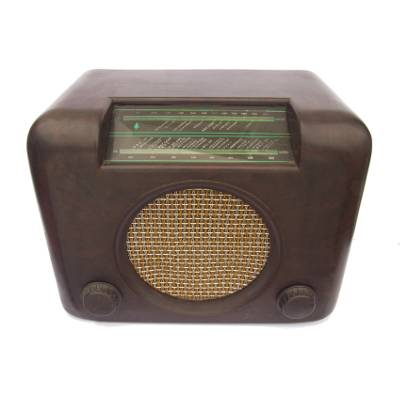USA Computer Services Blog
What Streaming Media was Like 100 Years before YouTube
 We marvel at how easy it is to stream media over the Internet and turn our PC or mobile device into an entertainment terminal to the world's vast entertainment library. Having every movie at our fingertips is a new experience, but the technology of instant media is over 100 years old, and its development is a testimony to human innovation.
We marvel at how easy it is to stream media over the Internet and turn our PC or mobile device into an entertainment terminal to the world's vast entertainment library. Having every movie at our fingertips is a new experience, but the technology of instant media is over 100 years old, and its development is a testimony to human innovation.
Radio: The Original Streaming Media
In 1916, physicists first transmitted information wirelessly by manipulating electrical frequencies. The first nonmilitary long distance transmission took place over the flat fields of Wisconsin and used Morse Code to communicate weather patterns. The value of such technology was immediately understood by the world, and improvements to user-interface and broadcasting distinctions were dramatically improved upon, making innovators like Guglielmo Marconi a household name. It didn't take long for radio transmissions to expand beyond Morse Code and include news and entertainment.
Muzak: Different than Music
A decade after first broadcasting weather reports in Wisconsin, U.S. Major General George O. Squier devised a new technology to replicate and transmit music. This new form of streaming was given the name "muzak" and it utilized electronic signals to reproduce musical sounds. Muzak has a unique sound that you've likely heard before in elevators and waiting rooms. Muzak systems are quickly being replaced by digital formats, but its sound will forever be identified with the calming background music of places like restaurants. Even though Muzak is pretty much dead, the sound digitally lives on today!
Television: From Black and White to Color
Television broadcasting technology didn't take long to develop after the invention of the radio, but it did take a long time to get off the ground because the first television sets were extremely expensive. There was also the fact that government regulations controlling the airwaves were slow to see the value of television as a commercial service, which contributed to the technology's slow growth.
The first scheduled television broadcast took place in July of 1928, but it would be decades before television's popularity would overtake radio's. Even after World War II, few homes had television sets. However, post-World War II saw the television technology skyrocket as new broadcasting companies started up and spread to every major market. In fact, by 1962, 92% of all homes in the U.S. had a television set. Today, you would be hard pressed to find a U.S. home without several television sets.
Streaming Text: AKA Closed Captioning
Streaming text doesn't refer to texting on your cell phone, but rather, it refers to the closed captioning streaming at the bottom of your TV screen. Streaming text helped television become a more versatile technology by allowing the hearing impaired and people that speak a different language to better understand the content. Watching streaming text is a separate media experience than just watching regular TV and it has really helped to make television one of the greatest tools used for breaking down cultural barriers.
Streaming Media over the Internet
Today, you can stream over the Internet media like TV shows, movies, live broadcasts, and more onto your PC or mobile device. This technology popularized by online media services such as YouTube, Netflix, Hulu, Pandora, Spotify, and Bandcamp, and it actually has its beginnings in the early 1990s, before any of these companies were even started. We are just now experiencing the full effect of how much this streaming technology changes the way we interact with the world around us.
Having the world's media at our fingertips, and having the ability to access it from anywhere is something that would make Guglielmo Marconi proud. If you don't know who Marconi is, you can easily find and stream a full length documentary on his life via YouTube in just seconds. That's the power of streaming media over the Internet! To learn how to take advantage of the full potential of streaming media for your business, give USA Computer Services a call at (704) 665-1619!

Comments